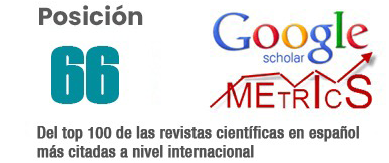Dictation as a method in the teaching-learning process of word classes
DOI:
https://doi.org/10.62452/dpyngq79Keywords:
Teaching-learning of grammar, dictation, text system, word classesAbstract
This article presents partial results of a research on the teaching of the Spanish language in Cuban preuniversity, this focuses on the persistent difficulties in the teaching of grammar. Dictation was proposed as a method to improve not only spelling, but also the understanding of grammatical content, which also contributes to the development of active listening and concentration skills. In the qualitative study carried out at the Ernesto Guevara de la Serna high school during the 2024-2025 academic year, theoretical and empirical methods were used: document analysis, surveys of students, observations of classes, and interviews with teachers. A text system designed to strengthen the learning of word classes in 10th grade was implemented. The results showed an improvement in the students' attitude and the quality of writing, although total mastery of grammatical content requires greater attention. It is concluded that, although the objectives were achieved, additional actions are needed to optimize teaching and consolidate writing and grammatical skills in students. Future research could delve deeper into the areas identified as needing improvement.
Downloads
References
Balmaseda Neyra, O. (2001). Enseñar y Aprender Ortografía. Editorial Pueblo y Educación.
Cassany, D. (2004). El dictado como tarea comunicativa. Tabula Rasa, 2, 229-250. https://revistas.unicolmayor.edu.co/index.php/tabularasa/article/view/1668
Díaz, C., Ledesma, F., Navarro, F., Cidoncha, J., Menéndez, L., Martín, M. J., Sancho, M., Bueno, R., & Sánchez, S. (2019) La importancia del dictado. ATAL. https://atalsevilla.blogspot.com/2021/04/20-la-importancia-del-dictado.html
Hernández, M. (2019). El dictado como instrumento para promover la interculturalidad en el aula ELE. Propuestas para el nivel a1. Instituto Cervantes de Nápoles.
Instituto Cervantes. (2024). Centro Virtual Cervantes. https//cvc@cervantes.es
Marcano, A., Salazar, T. & Tábata, D. (2010). Estrategias didácticas para mejorar la práctica del dictado, como herramienta para reforzar la lectura y la escritura. https://www.monografias.com/trabajos95/estrategias-didacticas-mejorar-practica-del-dictado/estrategias-didacticas-mejorar-practica-del-dictado3
Moré Mir, S. O. (2012). El tratamiento del dictado en la primera parte del programa de Español Literatura en 12mo grado. (Tesis de maestría). ISP. Félix Varela Morales.
Mosquera Gende, I. (2019). Docente, saca el máximo partido al dictado tradicional. https://www.unir.net/revista/educacion/docente-saca-el-maximo-partido-al-dictado-tradicional/
Downloads
Published
Issue
Section
License
Copyright (c) 2025 Yoel Jiménez-Gómez, Sandy Moré-Mir (Autor/a)

This work is licensed under a Creative Commons Attribution-NonCommercial-ShareAlike 4.0 International License.
Authors who publish in Revista Metropolitana de Ciencias Aplicadas (REMCA), agree to the following terms:
1. Copyright
Authors retain unrestricted copyright to their work. Authors grant the journal the right of first publication. To this end, they assign the journal non-exclusive exploitation rights (reproduction, distribution, public communication, and transformation). Authors may enter into additional agreements for the non-exclusive distribution of the version of the work published in the journal, provided that acknowledgment of its initial publication in this journal is given.
© The authors.
2. License
The articles are published in the journal under the Creative Commons Attribution-NonCommercial-ShareAlike 4.0 International License (CC BY-NC-SA 4.0). The terms can be found at: https://creativecommons.org/licenses/by-nc-sa/4.0/deed.en
This license allows:
- Sharing: Copying and redistributing the material in any medium or format.
- Adapting: Remixing, transforming, and building upon the material.
Under the following terms:
- Attribution: You must give appropriate credit, provide a link to the license, and indicate if any changes were made. You may do this in any reasonable manner, but not in any way that suggests the licensor endorses or sponsors your use.
- NonCommercial: You may not use the material for commercial purposes.
- ShareAlike: If you remix, transform, or build upon the material, you must distribute your creation under the same license as the original work.
There are no additional restrictions. You may not apply legal terms or technological measures that legally restrict others from doing anything the license permits.




